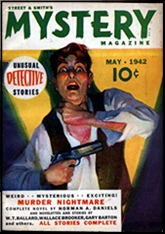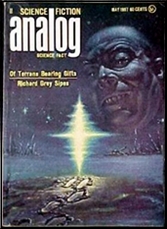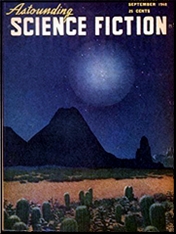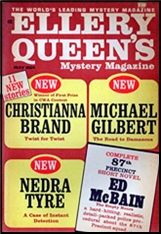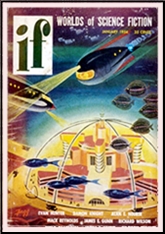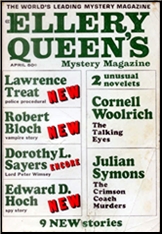Fri 28 Apr 2023
SF Diary Review: WORLDS OF TOMORROW – May 1967.
Posted by Steve under Diary Reviews , Magazines , Science Fiction & Fantasy[2] Comments
WORLDS OF TOMORROW – May 1967. Editor: Frederik Pohl. Cover artist: [Douglas] Chaffee. Overall rating: ***½.

FRED SABERHAGEN “Stone Man.†Novelette. One planet in the universe is such that time is a variable capable of physical control. The berserkers’ attempt to destroy life there takes them back to the time of the first colonists so that the race can be exterminated at once. Very human story of conflict and life in wartime. (4)
ADDED UPDATE: Taken from Wikipedia:
“These Berserkers, named after the human berserker warriors of Norse legend, are doomsday weapons left over from an interstellar war between two races of extraterrestrials…â€
DOUGLAS R. MASON “Squared Out with Poplars.†A mad scientist uses human brains for his computers. A strange excuse for a love story. (2)
DAVID A. KYLE “Base Ten.†Novelette. A missing little finger keeps a man marooned in space for eighteen years. A different story of “first contact.†(5)
SIMON TULLY “Whose Brother Is My Sister?†Novelette. Alien scientists combine with those of Earth to prove a theoretical relationship between space and time. Their efforts to stop time do not succeed entirely, as the flow of time is simply reversed. The alien culture is superbly created. (4)
MACK REYNOLDS “The Throwaway Age.†Novelette. A spy who thinks of the enemy as “commies†is assigned to infiltrate a new group concerned with the waste of America’s resource and man-power. Reynolds has good points, but tells a poor story. (3)
